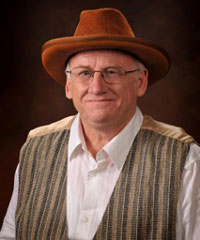
The thing I didn’t realize at the time was how many new breakfast cereals were being introduced by companies like General Mills and Kellogg. Here I must confess to getting information from a new book about processed food entitled Salt Sugar Fat, which might be classified as a “whistle blower” on the food industry.
One of the “sins” of the cereal manufacturers is getting us hooked on sugar as kids by means of the many sweetened cereals they introduced after doing extensive research on the way our bodies respond to sugar.
In the first place, packaged breakfast cereals were considerably more convenient than a product that had to be cooked. With a bit of clever marketing, they became popular. The major innovations took place in Battle Creek, Michigan, with the backing of John H. Kellogg and Charles W. Post. Add General Mills, and you have the big three cereal companies.
The cereal industry grew out of a combination of sincere religious belief and commercial interest in health foods. Dr. Kellogg ran the Western Health Reform Institute in Battle Creek. From there in 1895, he launched Cornflakes, which overnight captured a national market. But the cereal business soon became very competitive.
By 1911, Battle Creek was home to 108 brands of cereal.
In the 1930s, the first puffed cereal, Kix, went on the market. But the trouble began after WWII, when the big three companies started to target children and pour on the sugar. I remember the appeal of Post’s Sugar Crisp (1949) and Kellogg’s Sugar Smacks (1953), but I had no idea they were over 50% sugar by weight!
The major contribution of Charles Post was an emphasis on marketing. That entered a new dimension in the 1950s after TV began offering a number of programs for children. Different mascots were introduced, such as the Rice Krispies elves and later pop icons like Tony the Tiger and the Trix Rabbit.
Fast forward to 1975, when a Houston dentist, alarmed by the huge increase in toot decay he observed among his young patients, went to his neighborhood supermarkets. He bought boxes of 78 different brands of cereal and lab tested the sugar content of each. One third of them had between 25 and 50% sugar, with several going even higher.
When the cereal brands were cross-referenced with TV advertising records, the sweetest brands were most heavily marketed to kids during Saturday morning cartoons. With that data in hand, a professor of nutrition who was advisor to President Nixon published an article entitled, “Is It Cereal or Candy?” Although reform of the cereal industry followed, the problem has not gone away.
We haven’t even mentioned Kellogg’s Pop-Tarts or Instant Breakfast. Back to my original question: what are your childhood memories of breakfast food?
Jerry Lincecum is a retired English professor who now teaches classes for older adults who want to write their life stories. He welcomes your reminiscences on any subject: jlincecum@me.com